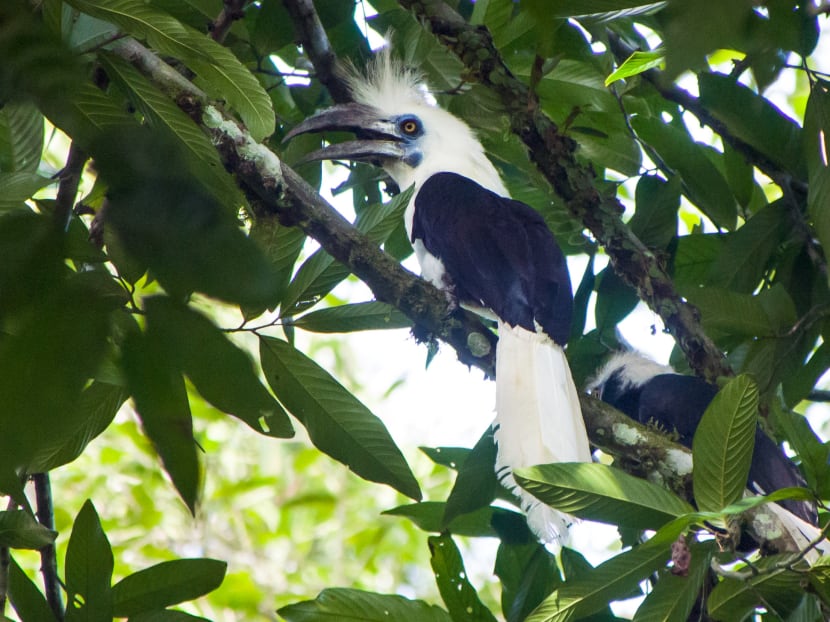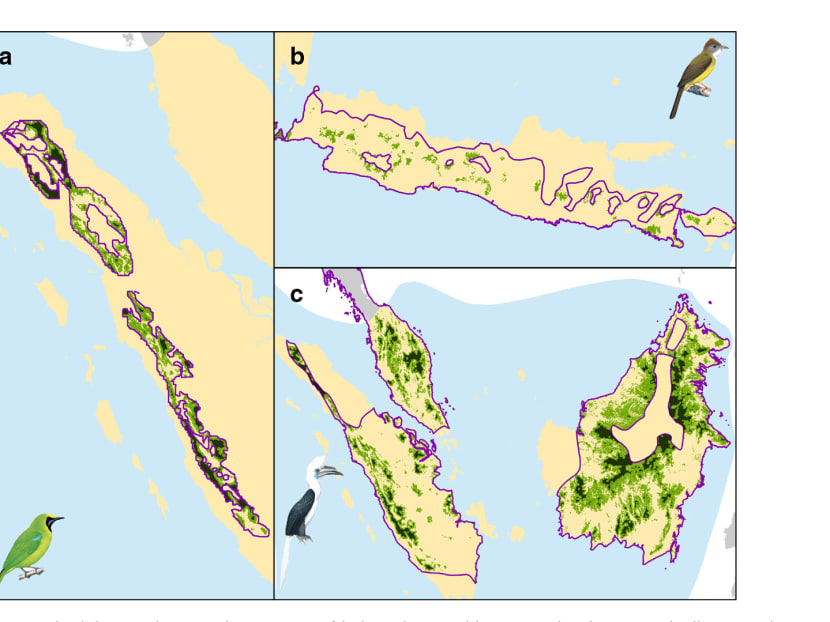Deforestation and wildlife trade combined may cause 50 to 90 SEA bird species to go extinct by 2100: Study
SINGAPORE — The combined impact of deforestation and illegal wildlife trade on tropical biodiversity is severely underestimated, and could lead to the extinction of some South-east Asian bird species by the end of this century, a study has found.

A white-crowned Hornbill. Focusing on 308 forest-dependent bird species in Sundaland — a region that includes Borneo, Sumatra and Java — scientists found that the loss of forest habitat in the area, combined with hunting or poaching, resulted in a “much higher population loss” than when accounted for separately.
SINGAPORE — The combined impact of deforestation and illegal wildlife trade on tropical biodiversity is severely underestimated, and could lead to the extinction of some South-east Asian bird species by the end of this century, a study has found.
Focusing on 308 forest-dependent bird species in Sundaland — a region that includes Borneo, Sumatra and Java — scientists found that the loss of forest habitat in the area, together with hunting or poaching, resulted in a “much higher population loss” than when accounted for separately.
Of the 308 bird species, 77 are heavily trapped to become pets, food or products, said the scientists from the National University of Singapore (NUS) and University of Sheffield. The birds include the Melodious Bulbul, Javan Leafbird and Silvery Pigeon.
Typically, the International Union for Conservation of Nature (IUCN) tracks the different threats to wildlife separately.
Yet, the threats are interconnected and the combined impact could be more severe than what is now estimated, the researchers noted in their paper published in the Nature Communications journal.

Between 2000 and 2015, nearly nine in 10 of the bird species they studied had experienced an average habitat loss of 16 per cent due to deforestation. The 77 commercially valuable species experienced a mean population decline of 37 per cent.
The decline from the combined impact of deforestation and exploitation is estimated to be 23.9 per cent for all 308 species, and 51.9 per cent for the 77 commercially valuable species.
The researchers suggested that a total of 51 bird species should be listed as critically endangered, endangered or vulnerable — nearly double the 27 now listed by IUCN.
They said that 50 to 90 of the species that they examined, such as the Ruby-throated Bulbul and White-crowned Hornbill, might also become extinct by 2100.
The researchers noted that they did not consider other threats such as logging, as the impact of it on many species remains unknown. However, it will “likely cause substantial reductions in some species”.
Lead author William Symes, a recent PhD graduate from NUS, said: “Recent extinctions like the passenger pigeon and the dodo present common traits like the simultaneous combination of habitat loss and active hunting. This fatal combination of ingredients is present for dozens of unique bird species in Sundaland.”
Dr David Edwards from the department of animal and plant sciences at the University of Sheffield, said that without urgent policy intervention to curb deforestation and slow the quantities of birds entering the cage-bird trade, many species are likely to be lost. “Failing to account for these combined threats can lead to a major underestimation of threats in the IUCN Red List assessments.”
Assistant Professor Roman Carrasco, from NUS’ department of biological sciences, added that their technique of assessing combined threats can be applied to other tropical forests outside of South-east Asia facing similar threats.
“Coordinated efforts to curb commercial exploitation and slow deforestation, for instance, can limit the extinction of bird species,” he added.











